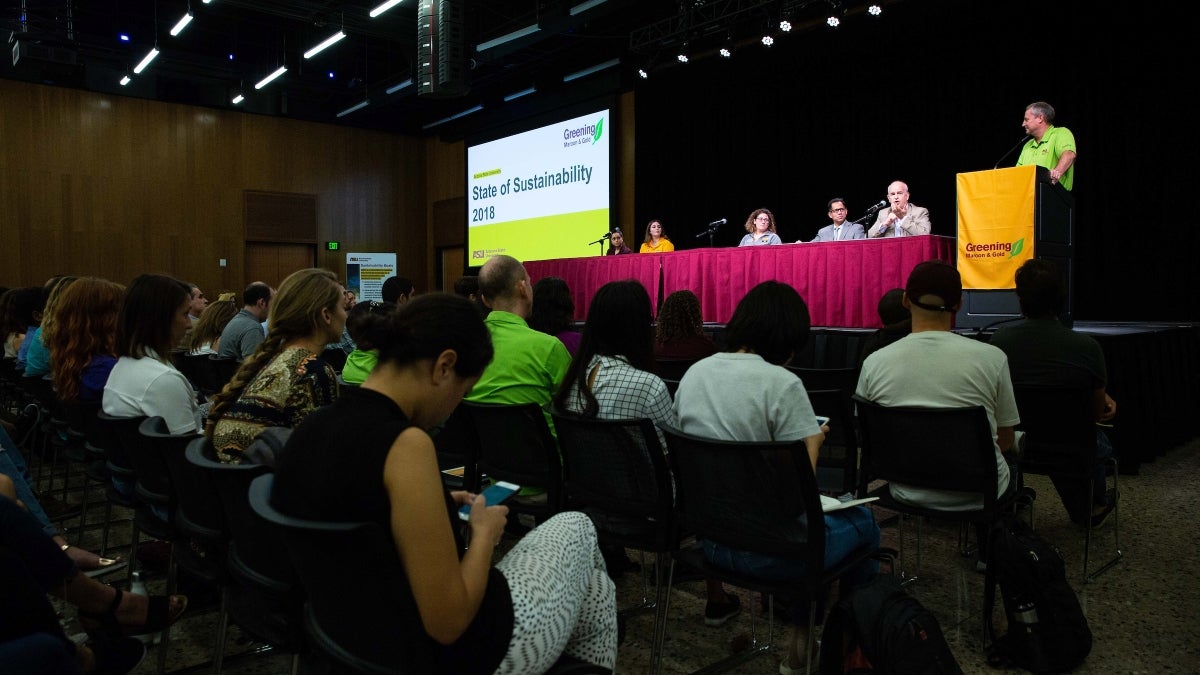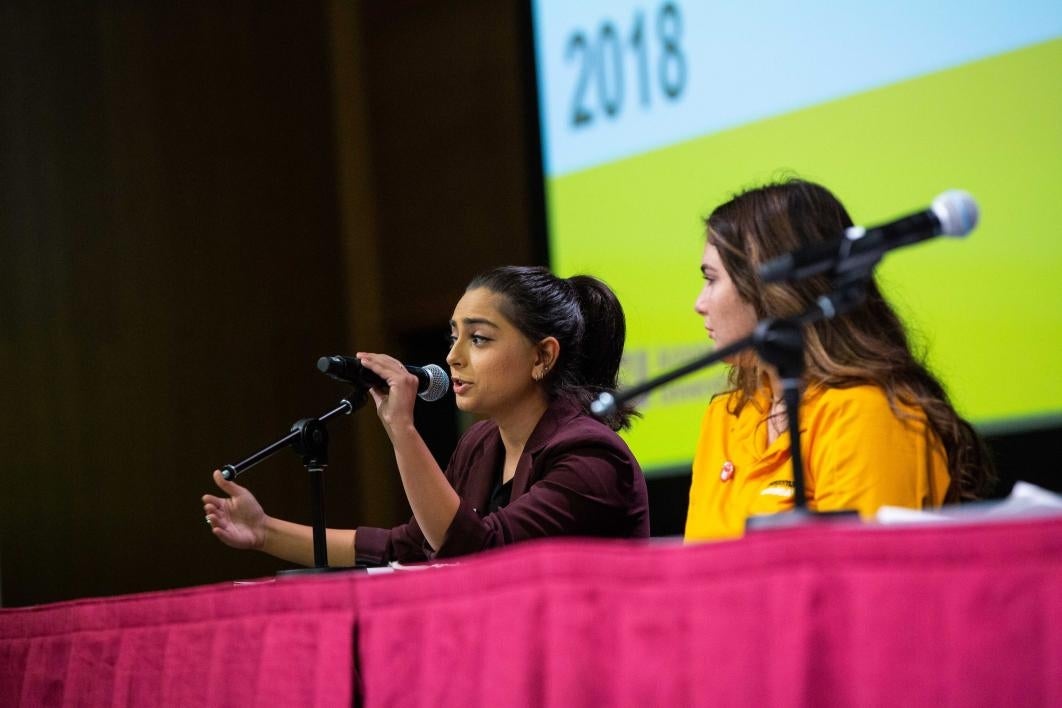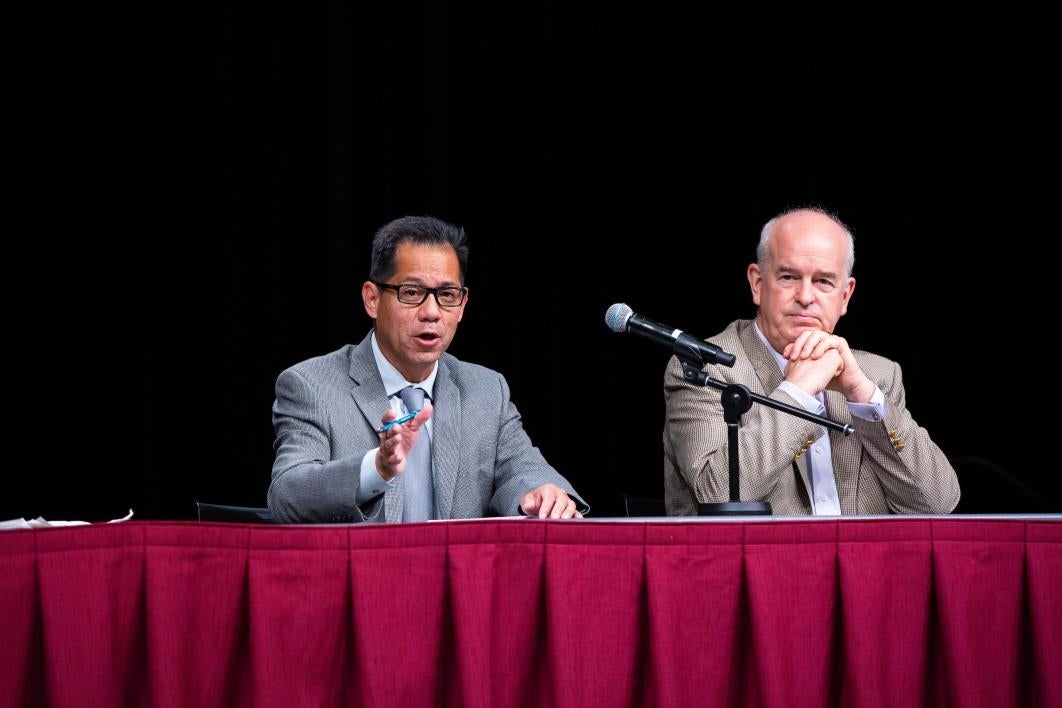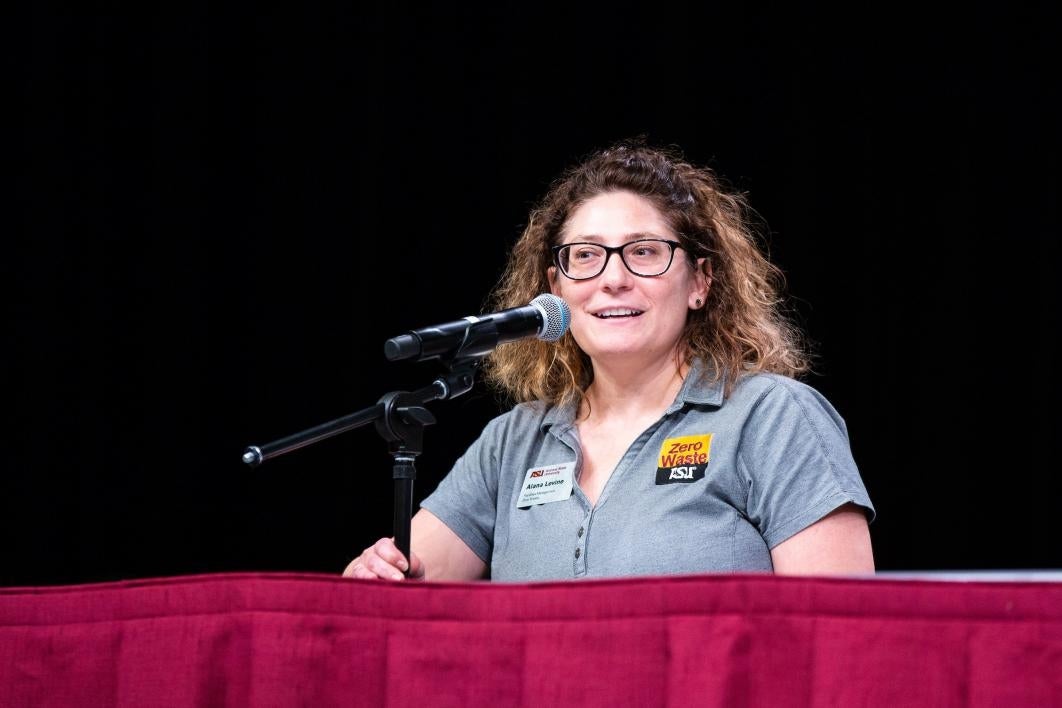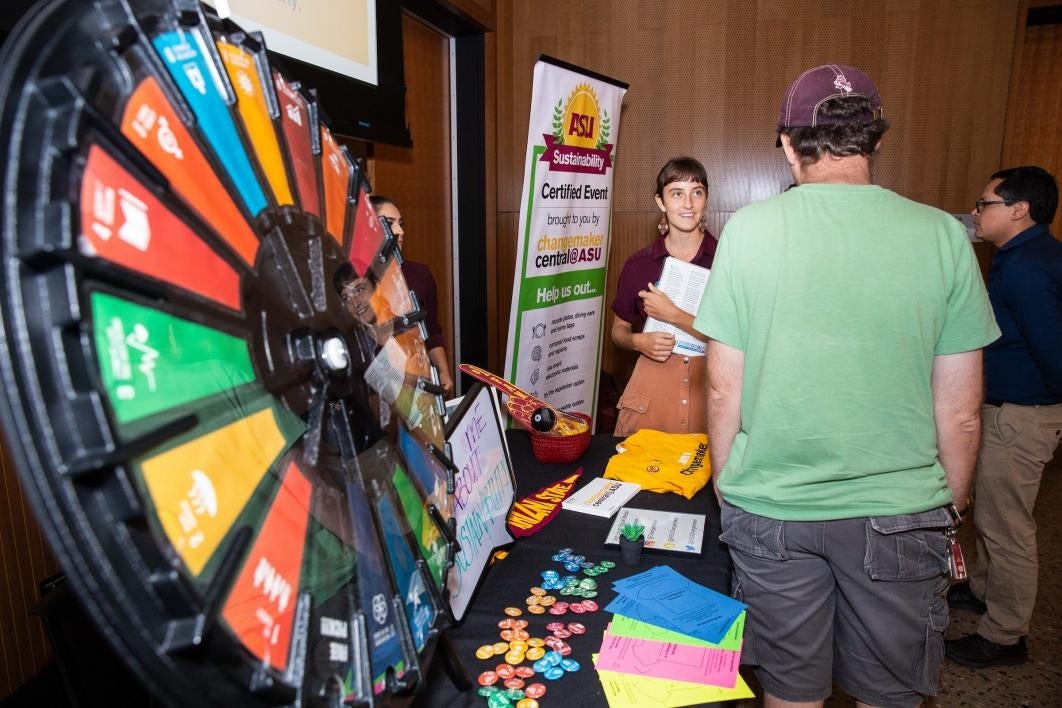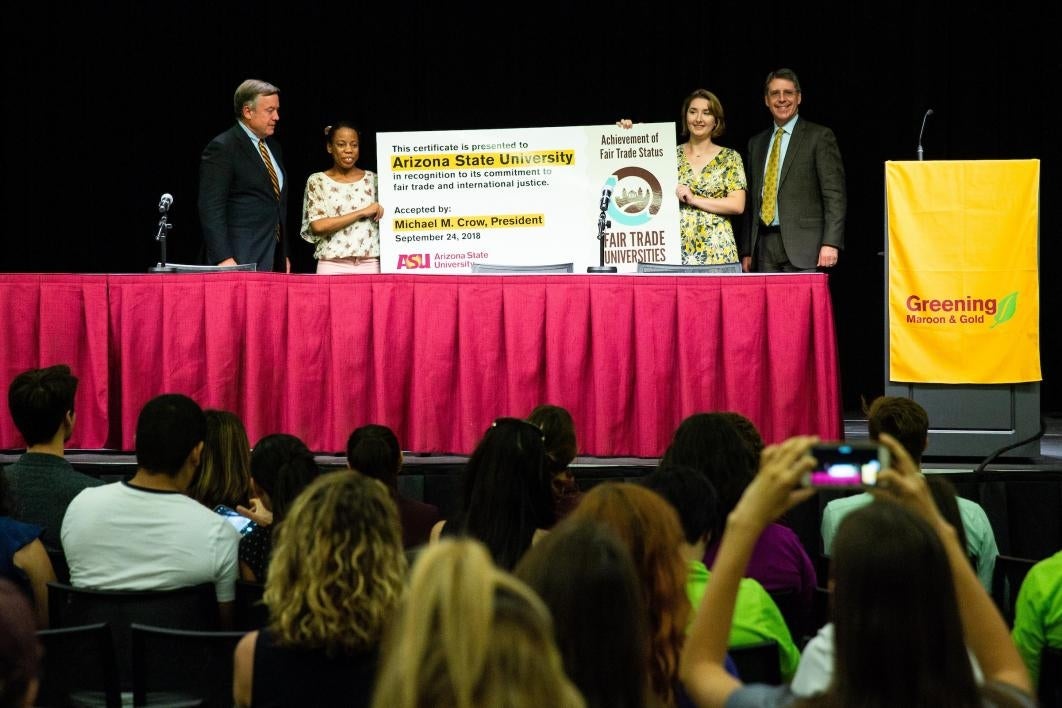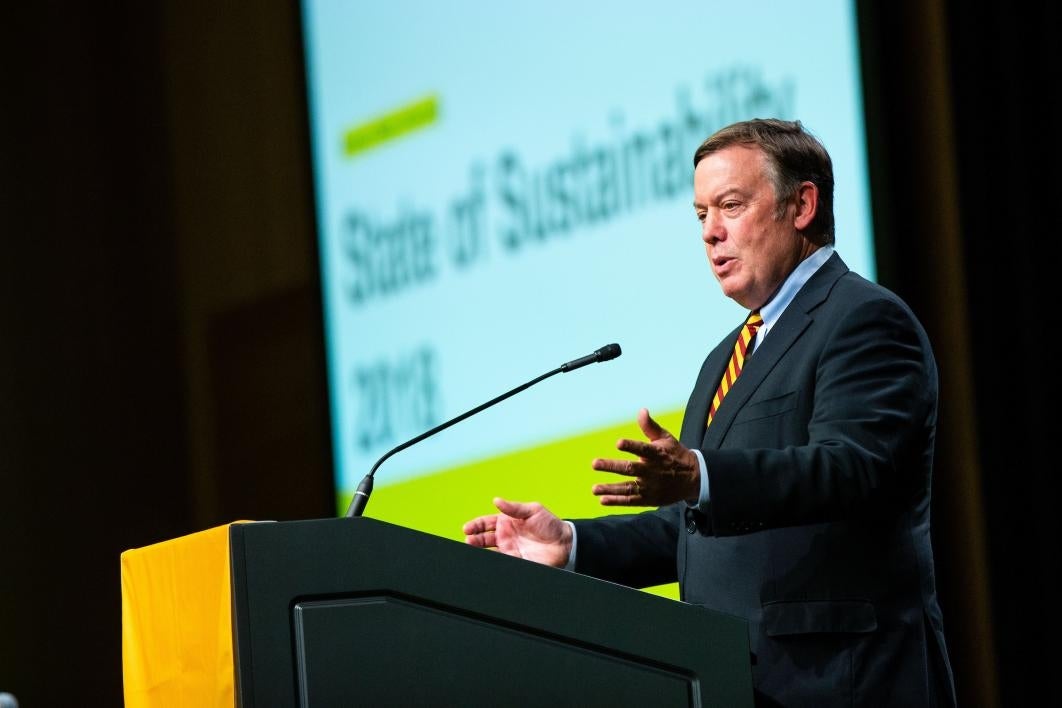When the director of Arizona State University’s Energy Innovations Group takes the long view of his job, he’s looking at an investment in the future.
Someone else’s future.
Gerry DaRosa sees the 90 solar installations across ASU’s campuses and locations as possible inspiration for a CEO thinking 15 years from now about what she wants in a new headquarters.
“I think it’s very important to set the example here at ASU for the next generation,” DaRosa said Monday at ASU’s fourth annual State of Sustainability Summit, an event that showcases the university’s accomplishments in the past year.
Home to the world’s first school of sustainability and the first university to offer a degree in the practice, ASU strives to act as a living laboratory and example of sustainability for society.
“We are educating the next generation of leaders who will go out with this knowledge, and every decision they make will be informed by this knowledge,” university Chief Financial Officer Morgan Olsen said. “I can’t think of anything more important in the area of sustainability we can do than that single function. … We’re a model of what we’d like to see in this world.”
Set against a global backdrop, the university’s efforts aren’t even a drop in the bucket. All the efforts of all American universities who signed a pledge to reduce carbon emissions amount to about 3 percent of U.S. emissions.
“That’s as far as your brain can go?” ASU President Michael Crow said he asked a reporter who tossed that observation to him in an interview. “We have 100 percent of the learner imprint, and 3 percent of the carbon footprint. I’ll take the learner footprint, and we’ll move forward with that as a thing we work to alter and change and advance.”
Creating a sustainable future is not about what corporations, politicians and governments can do. It’s about what individuals do.
“We had to be more than academics who sat around and came up with ideas for other people to implement,” Crow said. “We also had to implement those ideas ourselves, so we signed up easily. We’re going to try to take our carbon footprint to the lowest possible number. I don’t have a date yet. … The point is, we need to be an all-in place that alters the teaching, learning and discovery environment about this really important thing — sustainability.”
In fiscal year 2018, the university diverted 43 percent of 9,149 tons of waste from landfills. Its campuses now run on 60 percent renewable energy during the day. ASU committed to be the largest fair trade university in the U.S. this year, joining 47 other universities and 533 university retailers pledging to provide fair trade food: items like coffee, tea and chocolate produced with fair labor practices and environmental protections.
All paper used on campus is 100 percent recycled. “That might not sound like much, but it’s a big deal,” said Nichol Luoma, University Sustainability Operations officer.
ASU came in seventh among doctoral institutions in the 2018 Sustainable Campus Index, a publication by the Association for the Advancement of Sustainability in Higher Education that recognizes top-performing colleges and universities overall and in 17 sustainability impact areas.
Alana Levine, interim director of Zero Waste and Grounds Services in Facilities Management, discussed the challenges of everyday implementation of sustainability at an institution the size of ASU.
“Some of the issues become very large across a campus this size,” Levine said. “Every single role has the potential to affect outcomes. … We continuously analyze the problem. … We’re constantly looking at the science.”
Among other advances in the coming year: more solar and battery power for the West campus will be installed, according to DaRosa.
“We’re going to do more,” he said.
Top photo: Sustainability scientist and university staff Michael Dalrymple (green shirt, at lectern) moderates a panel discussion on sustainability and how to incorporate it into people's lives Monday at the Student Pavilion on the Tempe campus. Photo by Deanna Dent/ASU Now
More Environment and sustainability

From ASU to the Amazon: Student bridges communities with solar canoe project
While Elizabeth Swanson Andi’s peers were lining up to collect their diplomas at the fall 2018 graduation ceremony at Arizona State University, she was on a plane headed to the Amazon rainforest in…

From environmental storytelling to hydroponics, student cohort crafts solutions for a better future
A select group of students from Arizona State University's College of Global Futures, a unit within the Julie Ann Wrigley Global Futures Laboratory, is laying the foundation to drive change…

2 ASU faculty elected as AAAS Fellows
Two outstanding Arizona State University faculty spanning the physical sciences, psychological sciences and science policy have been named Fellows of the American Association for the Advancement of…


